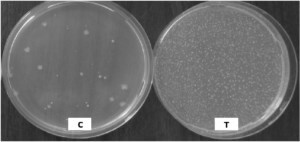History Highlight: When Superheroes Fought Toxics
By Joe Charbonnet | May 24, 2019
The Avengers franchise has stolen the superhero spotlight lately, but not long ago, heroes wore lab coats, not capes. And though it sounds like a comic book weapon, mutagen X was a very real toxic chemical villain. The story of mutagen X—how it was discovered and how it was vanquished—demonstrates the important role of fundamental science in a healthier world. The parallel development of environmental health science and analytical chemistry resulted in understanding and technologies that underpin much of the science and policy work we do to this day.
In the 1970s, environmental health leapt from the esoteric into mainstream academic study. Mysterious cancer clusters spotlighted the role of environment in public health. Biochemists developed revolutionary tools like the Ames Test to help identify the culprits of these catastrophes. In one case, scientists discovered when chlorine used for water disinfection reacted with natural organic matter, it formed a mutagen that powerfully damages DNA. This compound was a likely cause of the public harm scientists were documenting, but because they could not identify its chemical structure, they dubbed it “mutagen X.”
Simultaneously, fundamental analytical chemistry was also rapidly developing. The invention of inexpensive electron-capture detectors suddenly enabled chemists to precisely measure halogenated chemicals in nature. Researchers quickly realized that even low environmental concentrations of organohalogens like DDT and dioxin could do serious harm. These tools also finally enabled scientists toidentify the structure of mutagen X, leading to reduced exposure from the drinking water in many affected communities.
How is this story related to the Green Science Policy Institute’s work? Many of the Six Classes of toxic chemicals are also organohalogens. Though their names are not as exciting as mutagen X, the same principles and technologies are being used today in equally heroic fights against equally dastardly toxic chemical villains. It takes cleverness and teamwork worthy of The Avengers to achieve these successes.
Policymakers highly value applied research. But the story of mutagen X, and many of the other chemicals whose harm we have worked to reduce, shows how advancing fundamental knowledge, even where the applications are not immediately obvious, can be heroic for a healthier world for our children.
